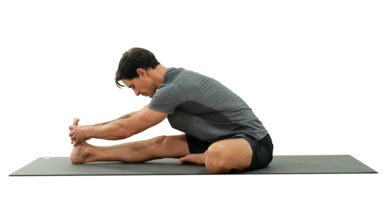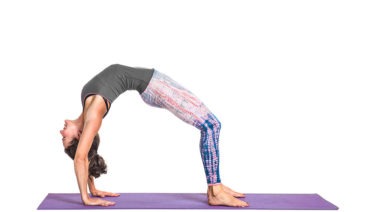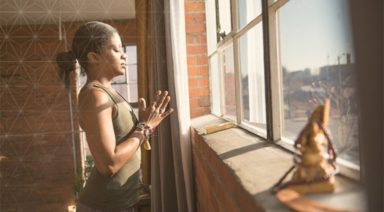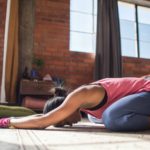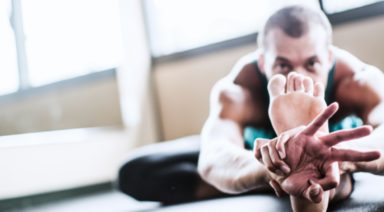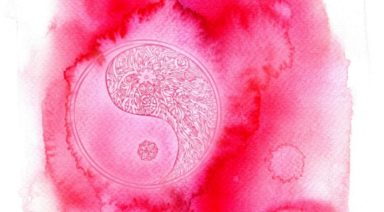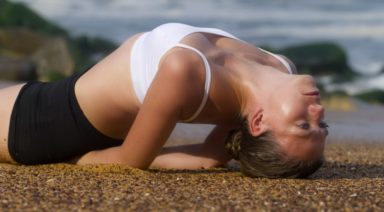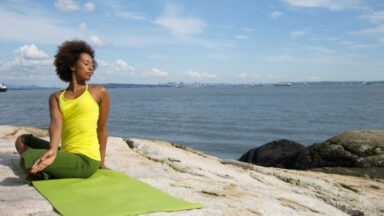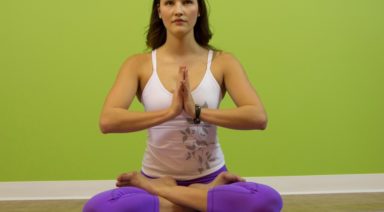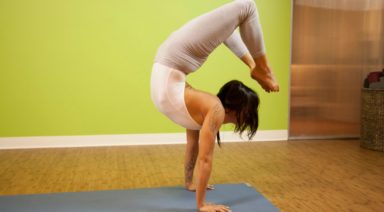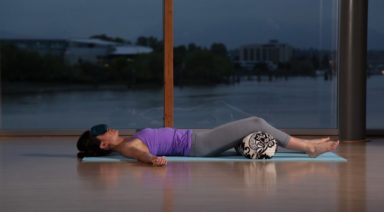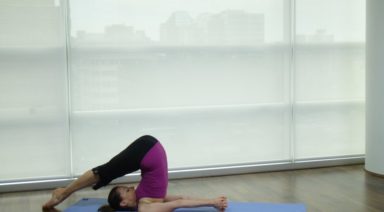Virabhadrasana III: Warrior III Pose
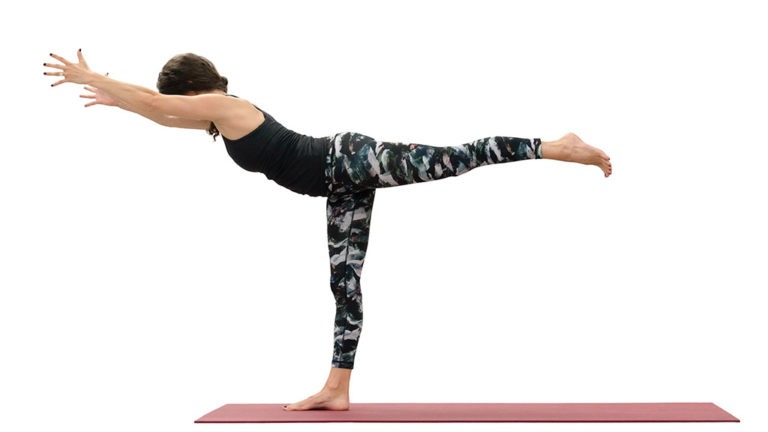
ADJUSTMENTS | BENEFITS | SEQUENCING | SANSKRIT | STEPS
Warrior III, or virabhadrasana (veer-ah-bah-DRAHS-ah-nah) III, is a challenging pose of balance and strength.
Philosophy + Origin
A fierce warrior, Virabhadra is often depicted as having a thousand heads, eyes, and feet. Draped in the skin of a tiger, this warrior wields a thousand clubs. In Virabhadra’s origin story, he is created from a single dreadlock from Shiva’s head, a manifestation of the rage he feels upon feeling like his true love has died. The shape of virabhadrasana III comes from this story, the moment when Virabhadra beheads the king Daksha and extends forward to place the head on a stake.
Despite the outward appearance and violent origin, this powerful pose is actually a great reminder of our own inner strength and the measures we would take in the name of true love.
ADJUSTMENTS/MODIFICATIONS:
- Shoulder modification: Rather than stretching your arms forward, reach your arms by your sides.
- Chair: Place your hands on a chair to assist with balance.
STEP-BY-STEP:
- Begin in a high lunge with your right foot forward and hands together at the center of your chest.
- Lean forward and shift your weight into your right foot until your left foot hovers off the ground.
- Straighten both legs as much as is comfortable. Extend the ball mound of your left foot back behind you and reach your chest forward.
- Press your standing foot firmly into the ground.
- Keep your hips level to the ground.
- When you feel relatively steady, reach your arms out in front of you to create one long line from your left foot to your fingertips. Face your palms toward each other and hug your forearms toward each other.
- Stay in the posture for 3-5 breaths, then gently release to standing. Repeat on the other side.
PREPARATORY POSES:
- Warrior I | Virabhadrasana I
- Cobra pose | Bhujangasana
- Chair pose | Utkanasana
SEQUENTIAL POSES:
- Pyramid pose | Parsvottanasana
- Half splits pose | Ardha hanumanasana
- Full splits pose | Hanumanasana
COUNTER POSES:
- Standing forward fold | Uttanasana
- Half pigeon pose | Eka pada rajakapotasana
SANSKRIT:
- Virabhadra = the name of Shiva incarnated as a fierce warrior
- Asana = pose
PHYSICAL BENEFITS:
- Strengthens ankles, legs, shoulders, and back.
- Tones the abdomen and core.
- Improves posture.
ENERGETIC BENEFITS:
- Creates a sense of power.
Legal Disclaimer Before participating in any exercise program or using any fitness products or services that may be described and/or made accessible in or through the Gaia Website and/or the Services, you should consult with a physician or other healthcare provider. Read more about Gaia’s Terms Of Use.
Malasana: Squat Pose or Garland Pose

ADJUSTMENTS | BENEFITS | CONTRAINDICATIONS | MANTRA | MUDRA | PREP POSES | SANSKRIT | STEPS | TIPS
A great stretch for ankles and the lower back, Malasana (mahl-AH-sana), which is also referred to as Squat or Garland pose, opens the groin and tones the belly. While comfortable for some, Malasana can be difficult for others. Appropriate adjustments and modifications can help students enjoy the benefits of this posture while strengthening and opening the muscles needed to practice Malasana and other postures.
Philosophy + Origin
There are many beautiful attempts to defend the translation of Malasana as “Garland Pose.” While mala most commonly refers to a garland or rosary, many students have a difficult time understanding how this imagery applies to the pose. Some teachers argue that the shape of the body depicts the bead on a mala, or perhaps the arms look like a mala or garland hanging from the neck. Other teachers will use the story of how this posture is traditionally taken when receiving the gift of a garland from a spiritual teacher. While all very poetic, there’s another lesser-known understanding of Malasana that makes more sense. The word mala can also be translated as excrement. Considering the digestive benefits of this posture, it makes a lot more sense.




